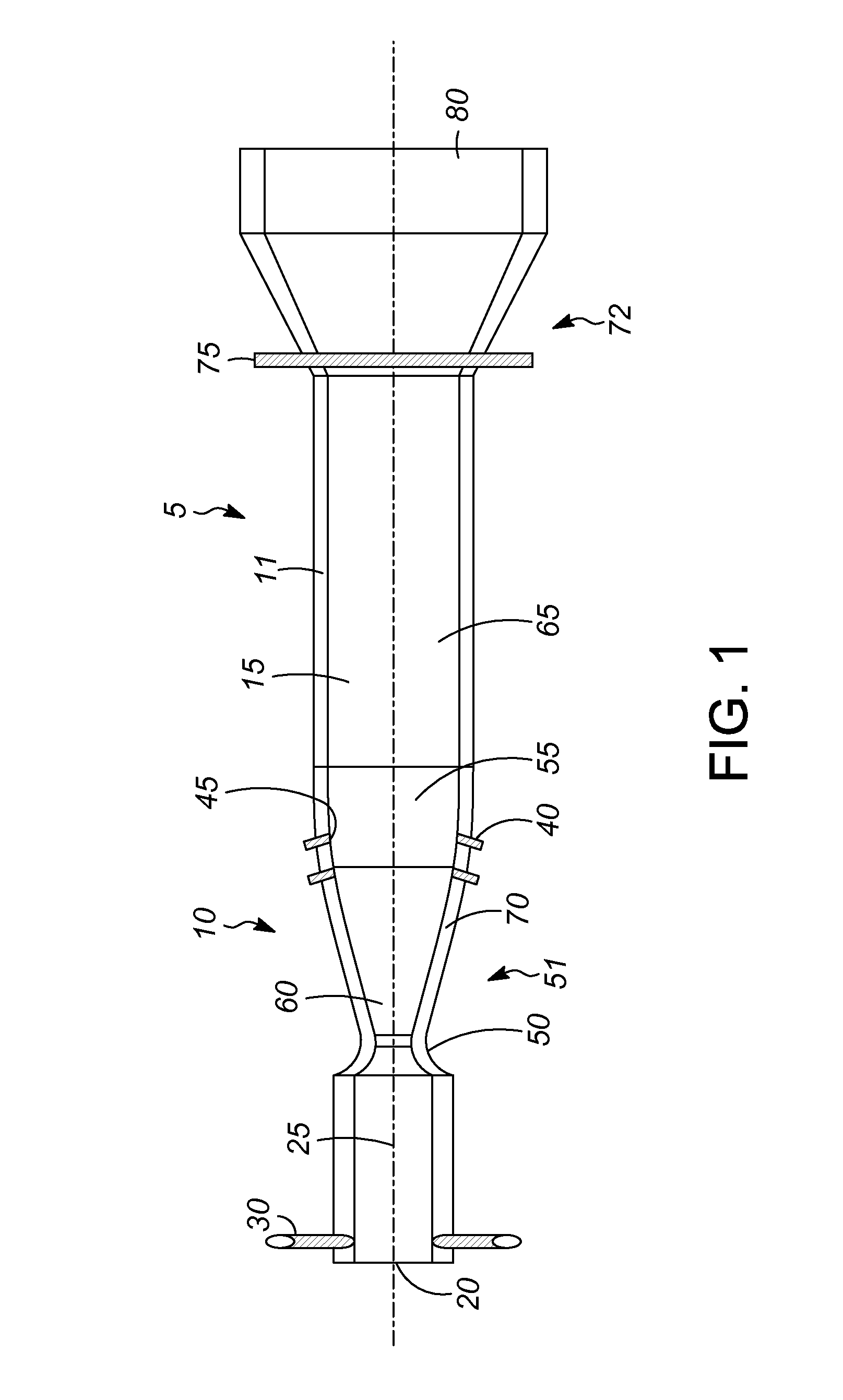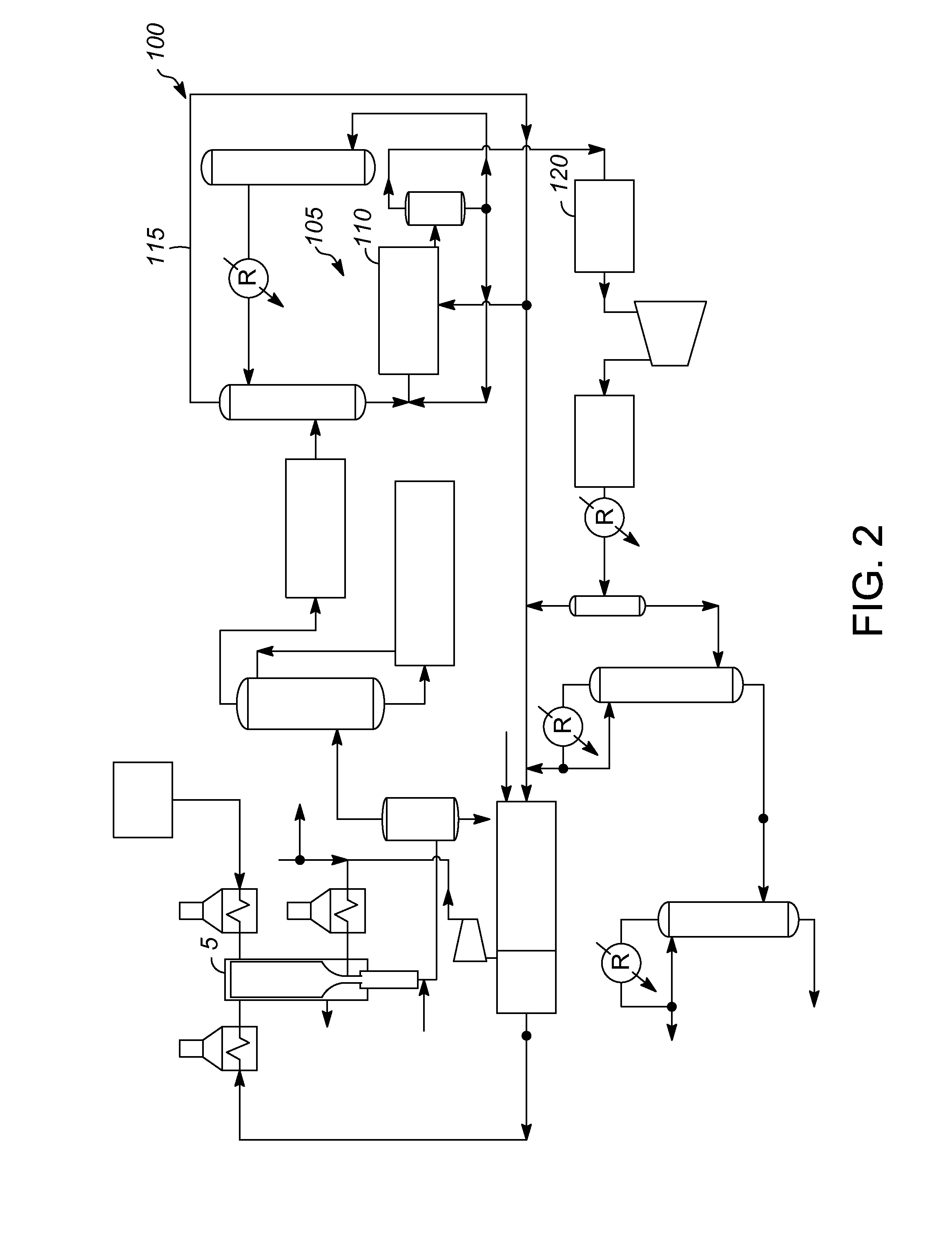Production of oxygenates from a methane conversion process
- Summary
- Abstract
- Description
- Claims
- Application Information
AI Technical Summary
Benefits of technology
Problems solved by technology
Method used
Image
Examples
Embodiment Construction
[0017]One proposed alternative to the previous methods of producing hydrocarbon products that has not gained much commercial traction includes passing a hydrocarbon feedstock into a supersonic reactor and accelerating it to supersonic speed to provide kinetic energy that can be transformed into heat to enable an endothermic pyrolysis reaction to occur.
[0018]Variations of this process are set out in U.S. Pat. Nos. 4,136,015 and 4,724,272, and Russian Patent No. SU 392723A. These processes include combusting a feedstock or carrier fluid in an oxygen-rich environment to increase the temperature of the feed and accelerate the feed to supersonic speeds. A shock wave is created within the reactor to initiate pyrolysis or cracking of the feed. In particular, the hydrocarbon feed to the reactor comprises a methane feed. The methane feed is reacted to generate an intermediate process stream which is then further processed to generate a hydrocarbon product stream. Particular product streams o...
PUM
 Login to View More
Login to View More Abstract
Description
Claims
Application Information
 Login to View More
Login to View More - R&D
- Intellectual Property
- Life Sciences
- Materials
- Tech Scout
- Unparalleled Data Quality
- Higher Quality Content
- 60% Fewer Hallucinations
Browse by: Latest US Patents, China's latest patents, Technical Efficacy Thesaurus, Application Domain, Technology Topic, Popular Technical Reports.
© 2025 PatSnap. All rights reserved.Legal|Privacy policy|Modern Slavery Act Transparency Statement|Sitemap|About US| Contact US: help@patsnap.com


